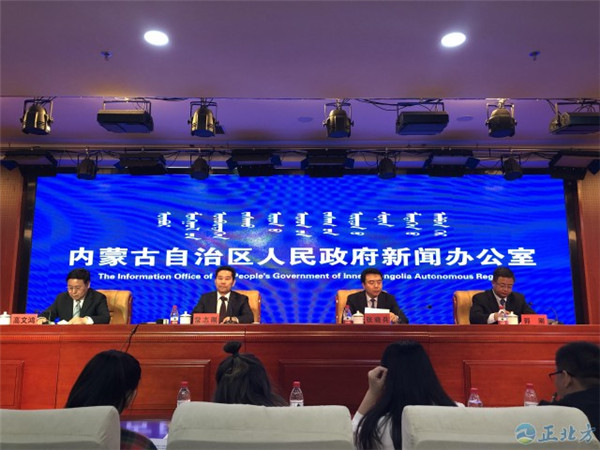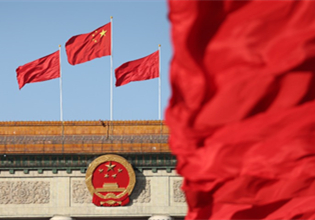Bayannuur reports soaring development over past 70 years

Local officials from Bayannuur, a city of North China's Inner Mongolia autonomous region, brief journalists on the city's extraordinary achievements over the past 70 years at a press conference held in Hohhot, capital of the region, on Sept 5. [Photo/northnews.cn]
Bayannuur, a city of North China's Inner Mongolia autonomous region, has undergone an almost inconceivable transformation in seven decades, according to local officials.
They told a press conference held in Hohhot, capital of the autonomous region, that the overall GDP of Bayannuur hit 81.3 billion yuan ($11.38 billion) in 2018 – as a result of average annual increases of 8 percent -- compared with GDP of just 80 million yuan in the early years after the founding of the People's Republic of China. That's higher than the national average over the same period, the officials said at the news conference on Sept 5.
They said that Bayannuur has the advantage of having the Hetao Plain -- with its fertile fields and unique agricultural and animal husbandry resources. This makes it an important national grain and oil production base and it is the largest producer of organic raw milk and sunflower seeds in the region.
It is also a vegetable production base and is the second largest tomato planting and processing center in China. In addition, it is also the only sheep breeding and meat processing base among prefecture-level cities which can guarantee a balanced supply in all seasons.
Meanwhile, Bayannuur's high-quality agricultural products are exported to 93 countries and regions and its volume of trading has ranked it first in the region for 10 consecutive years.
Over the past 70 years, the output value of agriculture and animal husbandry in Banyannuur has been continuously increasing, industry has developed and the driving role of the services sector in the economy’s development has gradually expanded.
Officials said economic development is becoming better coordinated and more sustainable and the quality and efficiency of that development has improved comprehensively.
In recent years, foreign trade has flourished. Imports and exports of goods through Ganqimaodu Port have exceeded 100 million tons, and the total annual volume of trade has reached nearly 100 billion yuan. Ganqimaodu has become the country's largest land port.
From January to July this year, the total import and export volume of trade of Bayannuur was worth 16.69 billion yuan. That represented a year-on-year increase of 31 percent, which was 21.4 percentage points higher than the growth rate of the whole region during the same period – and accounted for 26.4 percent of the total foreign trade volume of the region.
Officials said that over the past 70 years, the urban functions of Bayannuur have continuously extended. The urbanization rate of the whole city has reached 54.9 percent, 45.8 percentage points higher than its level in the early days of the founding of the People's Republic of China.
The built-up area of the urban area is now 128.6 square kilometers, the total mileage of the highway has currently reached 22,933 kilometers and its road density is at 35.6 kilometers/ 100 square kilometers, ranking it fourth in the whole area.
Over the past 70 years, the living standards of the people in Bayannuur have steadily improved, officials added and social undertakings such as education, medical treatment and culture have made considerable progress.
A basic public services system covering urban and rural areas has been established. Five regional-level counties have all been lifted out of poverty, as have 162 impoverished villages.
Last year, the per capita disposable income of urban and rural residents in the city reached 30,497 yuan and 17,221 yuan, respectively, 76 times and 121 times the levels in 1978. In 2018, the city's rural tourism sector hosted 2.36 million tourists and rural tourism generated income of 969 million yuan, benefitting a large number of farmers and herdsmen, officials added.



 Print
Print Mail
Mail





